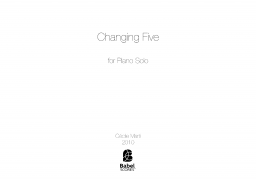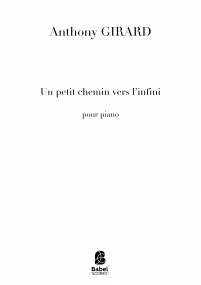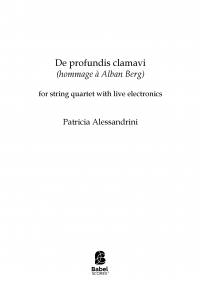Woad for Indigo
8,24 €
Digital version (+0,00 €) instant download
Printed format (+14,80 € printing and shipping). Colissimo7-14 days aprox.
When you buy a score, you can contact the composer right here!
Specifications
Region
North America (Canada - USA)
Estimated Duration
21 - 30min
Date
2003
ISMN : 979-0-2325-0220-5
In Stock
Notes on this piece Woad, or dyers woad (Latin Ivatis Tinctoria) is a hardy plant, often seen as a pest and weed. It grows to be about three feet high with long, bluish-green leaves around its stalk. It is biennial and thus once every two years it will flower profusely with small, yellow blooms which produce seed-like black tongues. The root is white and single.
Woad belongs to a genus spread over Southern Europe and Western Asia and, from having been cultivated extensively for its dye properties, has become established in waste places as far north as Sweden. It is found all over Great Britain and is the source of the legendary blue body-dye of the ancient peoples of the island.
The deep, blue dye is produced by the chemical indigotin, the exact same chemical found somewhat more easily and more commonly in the indigo plant indigenous to China.
In southern France however, woad is still greatly cultivated for its dye, and though indigotin yield is lower than that of the indigo plant itself, the dye extracted from woad produces a more profound blue. Indigo on the other hand, produces a more permanent dye, the reason for its contemporary commercial popularity. Superior dyes use both woad and indigo as sources of indigotin, producing a superior dye all around.
The dye is extracted from the leaves by a fermentation and drying process. The dying process itself is unique in that, in order to create a lasting stain the indigotin must be neutralized into a vat dye known as ‘indigo white.’ Though inconspicuous in its white form, indigo white has powerful staining qualities which become apparent upon oxidization. White fibers saturated with indigo white will, within moments of coming in contact with the air, turn a permanent deep indigo blue.
The work “Woad for Indigo” commissioned by Trevor Berens “Woad for Indigo” is actually comprised of two simultaneous works, one, a through composed piece entitled “Woad for Indigo” and the second an untitled work incorporating a series of 12 unrelated miniatures. The former is superimposed upon the latter to create the complete work “Woad for Indigo.”
Add to a playlist
- Login to create your own lists
Woad belongs to a genus spread over Southern Europe and Western Asia and, from having been cultivated extensively for its dye properties, has become established in waste places as far north as Sweden. It is found all over Great Britain and is the source of the legendary blue body-dye of the ancient peoples of the island.
The deep, blue dye is produced by the chemical indigotin, the exact same chemical found somewhat more easily and more commonly in the indigo plant indigenous to China.
In southern France however, woad is still greatly cultivated for its dye, and though indigotin yield is lower than that of the indigo plant itself, the dye extracted from woad produces a more profound blue. Indigo on the other hand, produces a more permanent dye, the reason for its contemporary commercial popularity. Superior dyes use both woad and indigo as sources of indigotin, producing a superior dye all around.
The dye is extracted from the leaves by a fermentation and drying process. The dying process itself is unique in that, in order to create a lasting stain the indigotin must be neutralized into a vat dye known as ‘indigo white.’ Though inconspicuous in its white form, indigo white has powerful staining qualities which become apparent upon oxidization. White fibers saturated with indigo white will, within moments of coming in contact with the air, turn a permanent deep indigo blue.
The work “Woad for Indigo” commissioned by Trevor Berens “Woad for Indigo” is actually comprised of two simultaneous works, one, a through composed piece entitled “Woad for Indigo” and the second an untitled work incorporating a series of 12 unrelated miniatures. The former is superimposed upon the latter to create the complete work “Woad for Indigo.”
Instrumentation
Piano
Recording
Piano- Trevor Berens
Score Details
Format - A4 / US Letter
Pages - 23
Pages - 23





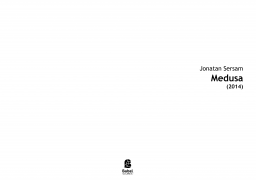
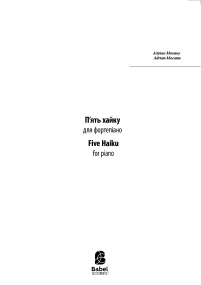
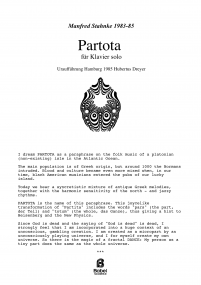
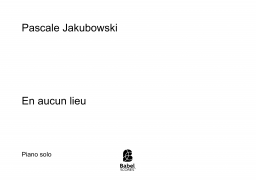
![Aer [la danse] image](/images/stories/virtuemart/product/resized/116_aer_havel-01_285x285.png)
